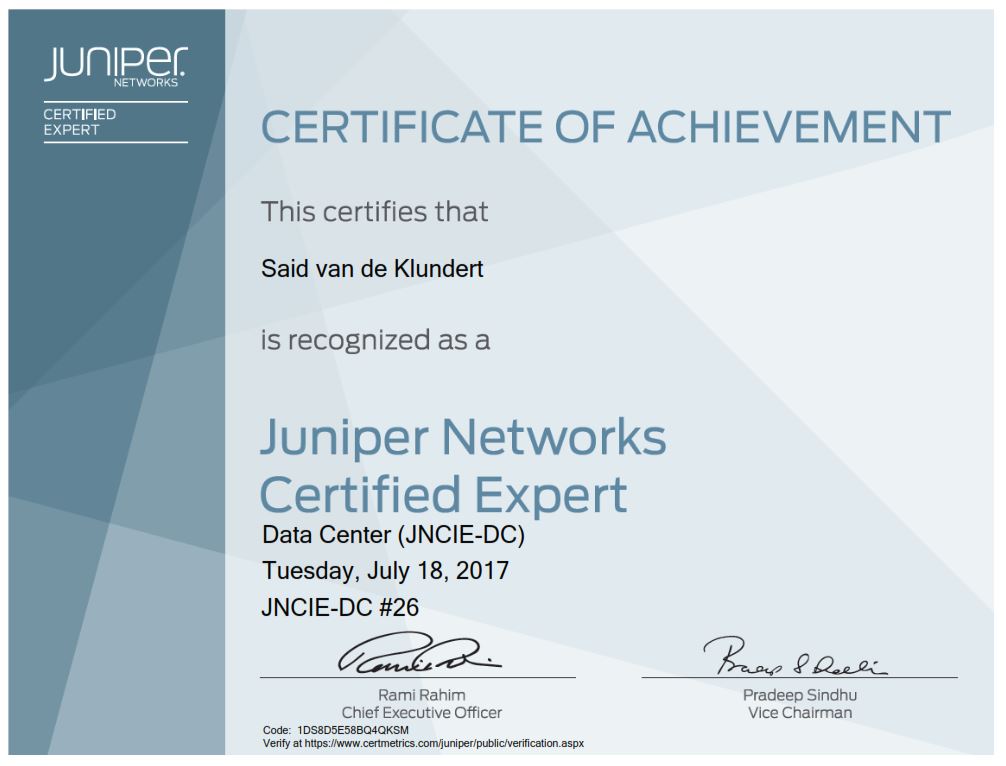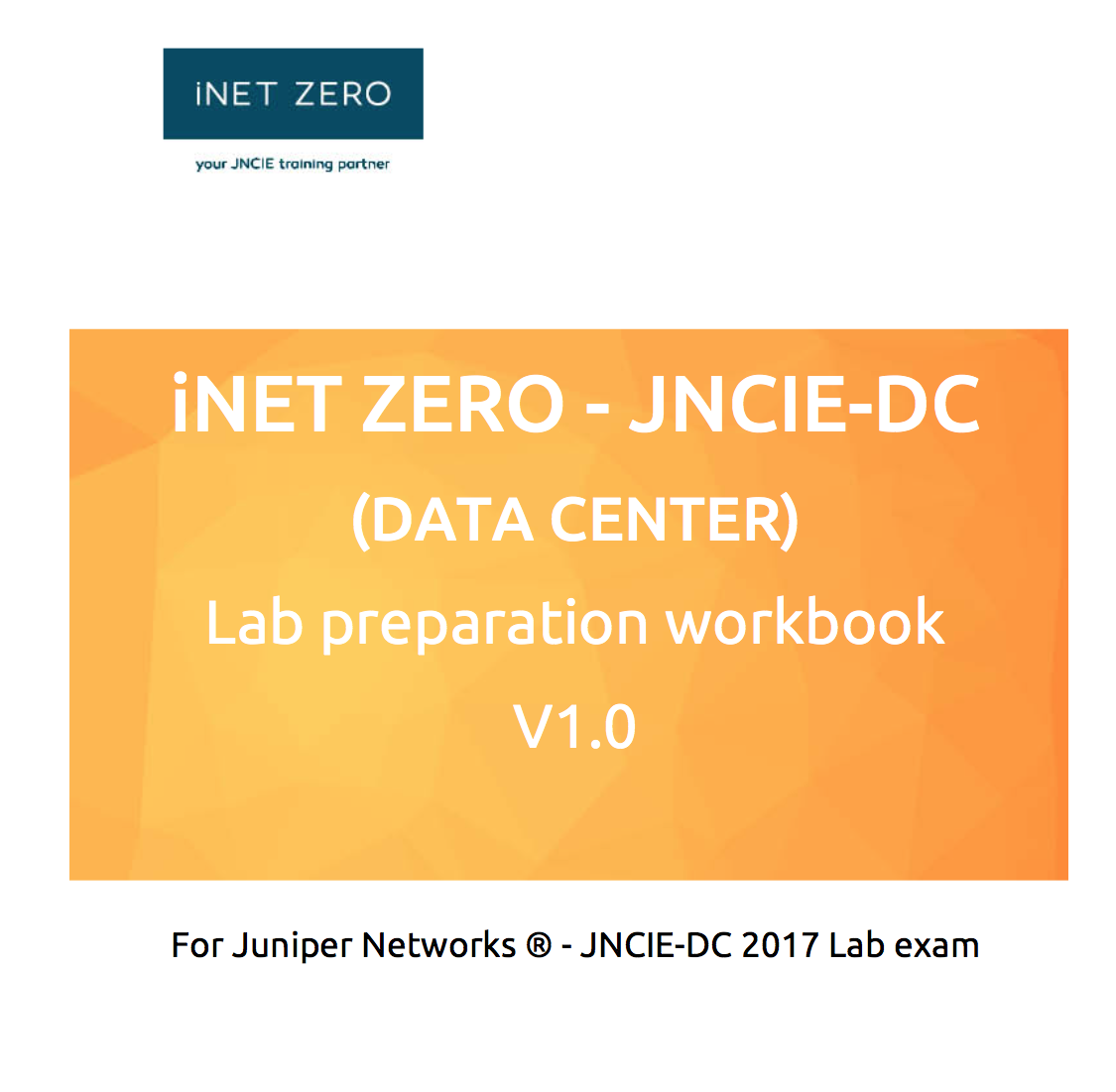On 18 July 2017, I sat the JNCIE-DC lab exam. After a week of waiting, the result got in: I passed!
Reasons for taking the JNCIE-DC.
As soon as I learned about the JNCIE-DC track, I knew that I just had to go for it. This is because the JNCIE-DC track brings together all of the things I really love in networking.
The track will teach you all about IP Clos fabrics, the controllerless overlay using EVPN and VXLAN, MPLS IPVPN and MPLS EVPN, VCF/MC-LAG as a layer 2 underlay, stateful firewalling on the SRX, CoS and automation. There was not a single thing on the blueprint that I did not thoroughly enjoy!
What I appreciated the most during my preparation was building multiple data centers and tying them together using different technologies. Building an IP Clos fabric that serves as an underlay to a controllerless overlay in one data center, interconnecting that data center to other data centers using MPLS EVPN or maybe extending the VXLAN domain over an MPLS IPVPN. Those are the types of things that you will be spending a lot of time on when pursuing the JNCIE-DC.
The exam itself.
The exam was a fair one. I did not encounter anything that was not in the blueprint and managed to finish well before the time was up, leaving about an hour early.
I think it is important to know that the exam is not just about building a VCF, an IPVPN or an overlay with some features turned on. What the exam is really about is how all these technologies work together. You need to build up experience combining the technologies listed on the blueprint. This way, you can learn how different technologies can affect each other and what problems you can run into while doing so. You do not want to be figuring this stuff out during your exam.
The preparations for the JNCIE-DC.
To prepare for this exam, I read (and in some cases reread) the following:
- Day One: Data Center Fundamentals ( < nice and light reading, start with this one)
- QFX5100 series: a comprehensive guide to building Next-Generation networks
- Day One: Using Ethernet VPNs for Data Center Interconnect
- The following Juniper networks white papers:
- Improve Data Center Interconnect, L2 Services with Juniper’s EVPN
- Clos IP Fabric with QFX5100 switches
- Juniper solution guide: Solution Guide Infrastructure as a Service: EVPN and VXLAN
- Juniper QFX10000 series: a comprehensive guide to building Next-Generation Data Centers
At the end of 2016, I had already gotten the JNCIE-SP. For that exam, I read quite a few books ( check the post here). From the list of books I mention there, I think the following will help you with the JNCIE-DC exam as well:
- Day One: Deploying Basic QoS
- Junos Layer 3 VPNs and Junos MPLS fundamentals.
- or get the old JMV (Junos MPLS and VPNs). You can skip all the VPLS and Interprovider stuff.
You should also realize that the most important thing is to put your knowledge into practice. Try to build everything you read and challenge yourself to combine the different technologies together.
When I was working towards the JNCIE-DC, there were no resources available in terms of labs and scenarios to practice. Therefore, I had to make my own labs using vMX and vQFX.
JNCIE-DC experiences put into workbook.
During the time that I was preparing for the exam, I was not just developing labs and scenarios for myself, I was also putting all of my labs and experience into a new workbook. The first version of that workbook is now finished:
This book, developed by Jörg Buesink JNCIE-DC#007 and myself, covers all of the technologies that the JNCIE-DC will test you on. It has chapters on every topic and finishes up with a full-day lab that serves as a JNCIE-DC test exam.
More to come.
We are also developing an iNETZERO JNCIE-DC bootcamp and rack rental so keep checking the iNETZERO website as we will post more information on these topics.
In summary.
To be able to pass the exam, you need to know the intricacies of the individual technologies as well as how these technologies can affect one another. Make sure that you can see how all the different DC technologies can be used together and how they can be combined to form a single network. The track is challenging, but by the time you are done, you will have a profound understanding of modern day data center networking.
And most importantly, the JNCIE-DC track is an absolute joy to work on.



